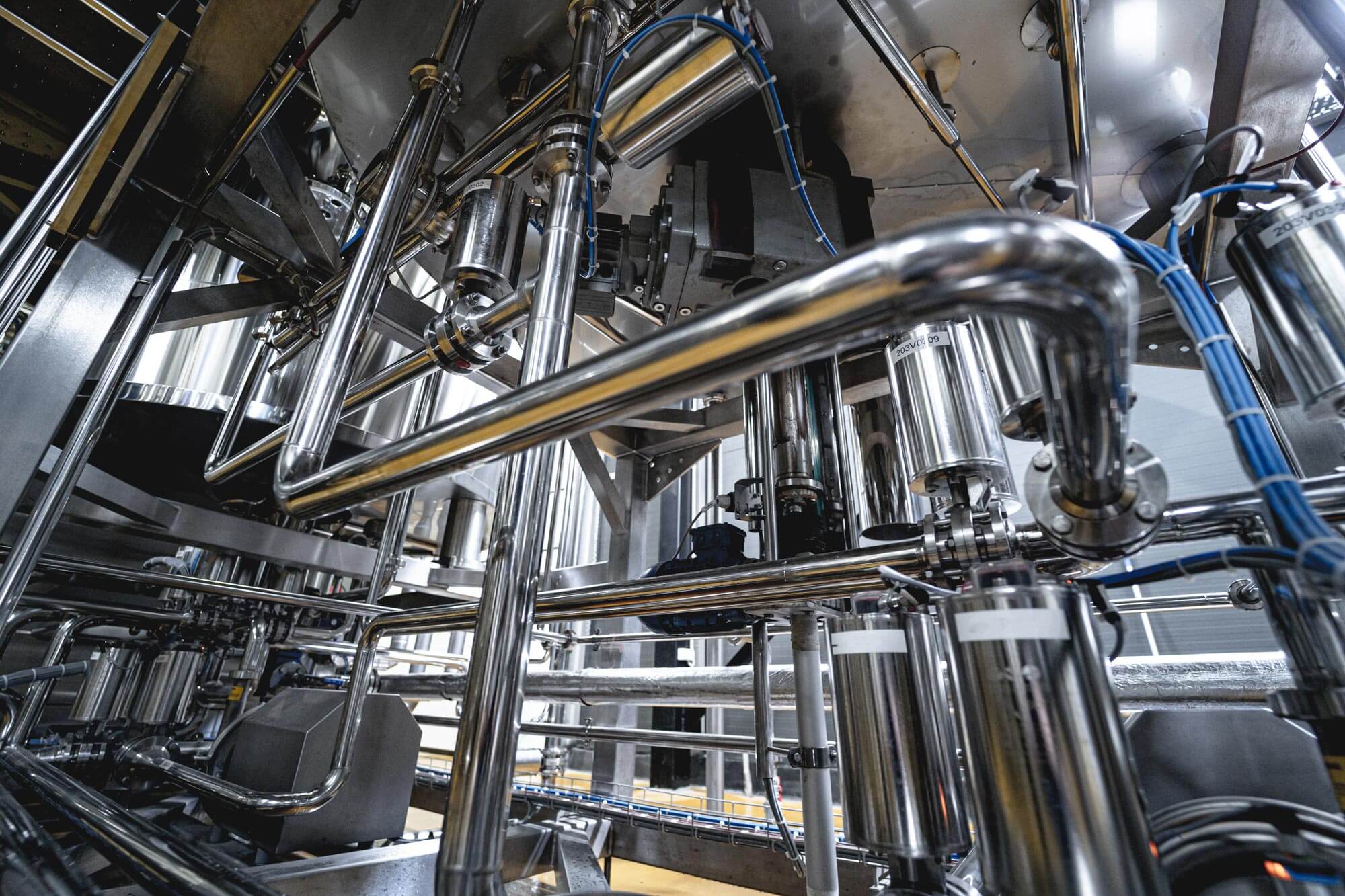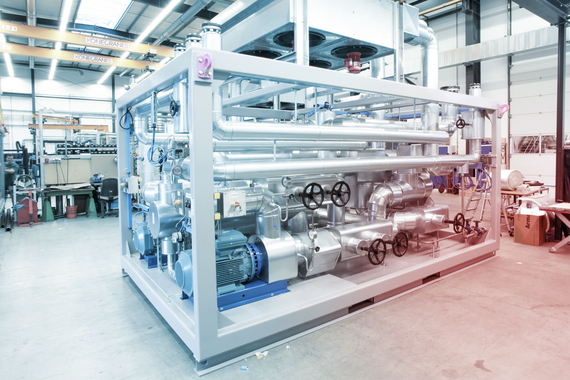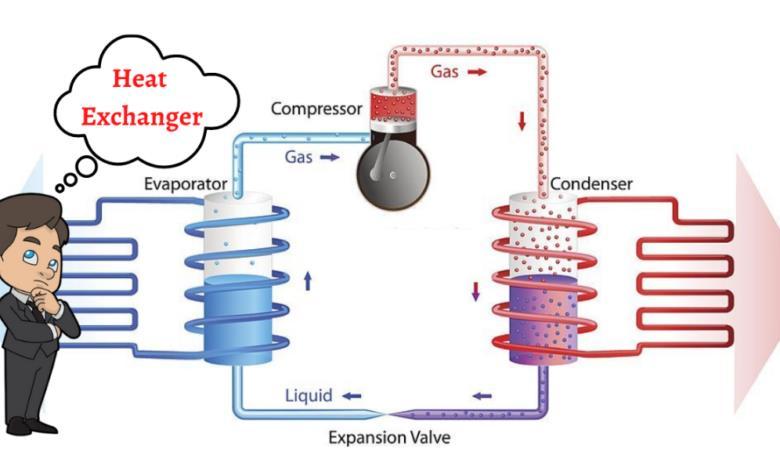DVS Heat Transfer Systems: A Step-by-Step Guide to Smarter IoT Integration
Wiki Article
A Comprehensive Guide to Picking the Right Heat Transfer Systems for Your Needs
Picking the appropriate Heat transfer system is necessary for operational effectiveness. Numerous systems satisfy different needs, influenced by factors such as temperature level variety and fluid kind. Recognizing the concepts behind Heat transfer, such as radiation, convection, and transmission, is vital. Furthermore, reviewing energy resources and upkeep techniques can influence lasting performance. A closer assessment of these considerations reveals just how to customize a system to specific needs. What should one prioritize in this complicated decision-making procedure?Comprehending Heat Transfer: Trick Ideas and Principles
Although Heat transfer may feel like a straightforward concept, it incorporates a series of concepts that are fundamental for reliable system layout. Recognizing these principles is essential for designers and developers who aim to enhance thermal efficiency in different applications. Conduction, for instance, includes the transfer of Heat via strong products, while convection refers to the motion of Heat within liquids. Radiation, an additional key concept, explains just how Heat can be transferred through electro-magnetic waves. Each of these systems plays an important function in establishing just how power relocates within a system. By thoroughly realizing these concepts, specialists can make enlightened decisions, ensuring that Heat transfer systems operate efficiently and satisfy the details demands of their applications
Kinds Of Heat Transfer Equipments: A Summary
Comprehending the concepts of Heat transfer lays the groundwork for checking out the various kinds of Heat transfer systems readily available. Heat transfer systems can be categorized mainly into 3 types: convection, radiation, and transmission. Conduction involves Heat transfer with solid products, depending on straight get in touch with in between bits. Convection, on the various other hand, happens in fluids (liquids and gases) where the activity of the fluid itself facilitates Heat transfer. Radiation involves the transfer of Heat through electromagnetic waves and does not need a medium, enabling it to take place in a vacuum cleaner. Each type of system has distinct qualities and applications, making it important for people and companies to thoroughly assess their certain needs when picking the most ideal Heat transfer solution.Applications of Heat Transfer Equipments in Numerous Industries
Heat transfer systems play an important duty across numerous markets, influencing effectiveness and item top quality. In industrial production procedures, they promote precise temperature control, while in food and drink processing, they guarantee security and conservation. Additionally, HVAC and climate control systems depend greatly on efficient Heat transfer to maintain comfortable atmospheres.Industrial Production Processes

Many industrial manufacturing processes rely greatly on effective Heat transfer systems to maximize performance and enhance item quality. In sectors such as metalworking, Heat exchangers play an essential role in preserving ideal temperatures during welding, casting, and creating. These systems assure uniform Heat circulation, which is vital for attaining desired material buildings. Similarly, in the chemical production sector, Heat transfer systems assist in exact temperature level control throughout responses, impacting yield and safety. Moreover, in fabric manufacturing, efficient Heat management is essential for dyeing and completing processes, influencing shade consistency and textile quality. By choosing ideal Heat transfer modern technologies, suppliers can enhance power performance and lower operational prices, ultimately leading to a more lasting and affordable production atmosphere.
Food and Beverage Processing
Reliable Heat transfer systems are just as important in the food and drink processing sector, where preserving perfect temperature levels is vital for food safety and top quality. These systems play a vital function in processes such as sanitation, pasteurization, and food preparation, making certain that products are secure for intake and maintain their dietary worth. Heat exchangers, for example, successfully move Heat in between fluids, maximizing energy usage while decreasing temperature changes. In addition, refrigeration systems are essential for prolonging and protecting subject to spoiling items rack life. The choice of Heat transfer innovation straight impacts operational effectiveness and item integrity, making it important for food and beverage makers to pick the suitable systems tailored to their particular processing requirements. This cautious choice ultimately adds to consumer complete satisfaction and food security.
HVAC and Climate Control
While many markets count on Heat transfer systems for efficiency, A/C (Heating, Air Flow, and Cooling) plays a vital role in maintaining indoor environment control across various settings. These systems use Heat transfer concepts to control moisture, temperature level, and air top quality, making sure comfort and safety and security in property, industrial, and industrial environments. Effectively created a/c systems enhance power performance, lower operational expenses, and reduce environmental effect. In business structures, for example, reliable climate control contributes to employee productivity and client satisfaction. In commercial applications, HVAC systems help maintain optimal conditions for equipment operation and product preservation. Choosing the ideal Heat transfer system is crucial for conference details environment control needs and attaining total system efficiency.Examining Energy Resources for Heat Transfer Equipments
In examining energy sources for Heat transfer systems, a comparison of renewable power choices and fossil fuel factors to consider is necessary. Renewable sources, such as solar and wind, offer sustainable alternatives that can reduce ecological impact. Alternatively, fossil gas stay prevalent because of their established framework and power thickness, triggering a careful analysis of both choices.Renewable Resource Options

Nonrenewable Fuel Source Considerations
Evaluating nonrenewable fuel source considerations is important for the performance and sustainability of Heat transfer systems. Fossil gas, such as natural gas, oil, and coal, are traditional power resources that provide website link substantial Heat outcome, making them popular options for industrial and household applications. Nevertheless, their environmental effect, consisting of greenhouse gas emissions and resource deficiency, increases concerns. When choosing a warmth transfer system, it is vital to evaluate the availability, cost, and governing variables associated with these gas. Furthermore, the performance of nonrenewable fuel source systems should be considered, as higher effectiveness can minimize some environmental disadvantages. Inevitably, a well balanced method considering performance and sustainability can assist decision-makers toward the most suitable Heat transfer service for their details needs.Elements to Consider When Choosing a Warm Transfer System
Choosing a proper Heat transfer system calls for mindful consideration of different variables that can considerably impact efficiency and performance. One essential aspect is the operating temperature variety, which determines go right here the materials and design appropriate for the application. Furthermore, the kind of fluid used in the system-- whether gas or liquid-- affects Heat transfer performance and compatibility. The system's dimension and ability need to line up with the certain requirements of the operation to stay clear of inadequacies. Power source accessibility is additionally essential, influencing operating expense and sustainability. The installation environment, including area constraints and ease of access for upkeep, plays a considerable function in system option. Finally, governing compliance and safety criteria have to be considered to guarantee the system satisfies all legal needs.Maintenance and Efficiency Optimization for Heat Transfer Solutions
Keeping Heat transfer systems is essential for guaranteeing optimal effectiveness and long life. Regular upkeep activities, such as cleansing Heat exchangers and evaluating insulation, aid stop efficiency losses as a result of fouling and thermal linking. In addition, keeping track of system criteria, consisting of stress and temperature, permits early detection of abnormalities, minimizing downtime and pricey repairs. Implementing a precautionary maintenance timetable can maximize performance and extend the life expectancy of parts. Updating to advanced control systems can improve operational efficiency by readjusting to varying problems and lots. By prioritizing upkeep and performance optimization, drivers can attain reduced energy consumption, lower operational costs, and improved overall system integrity, inevitably leading to better resource usage and an extra sustainable operation.Future Fads in Heat Transfer Technologies
As industries significantly focus on sustainability and power performance, future fads in Heat transfer innovations are established to undergo considerable improvements. Developments such as innovative materials, including carbon nanotubes and nanofluids, promise enhanced thermal conductivity and performance. In addition, the integration of renewable resource i was reading this sources into Heat transfer systems is getting momentum, promoting green solutions. Smart technologies, consisting of IoT sensors, are expected to change surveillance and control, making it possible for real-time data evaluation for enhanced performance. Moreover, the growth of modular and portable systems will certainly help with less complicated installment and maintenance, accommodating varied applications. These developments show a shift in the direction of even more lasting, efficient, and adaptable Heat transfer services, straightening with international energy goals and ecological standards.
Frequently Asked Concerns
What Are the Ecological Influences of Heat Transfer Systems?
The ecological impacts of Heat transfer systems can include greenhouse gas exhausts, energy intake, and prospective thermal air pollution. Additionally, inappropriate disposal of materials and inadequacies can add to source exhaustion and community interruption.Just how Do I Calculate the Cost-Effectiveness of a Warm Transfer System?
To compute the cost-effectiveness of a heat transfer system, one must analyze initial prices, operational costs, upkeep needs, and power performance, comparing these elements versus the anticipated life-span and efficiency of the system.Can Heat Transfer Equipment Be Used in Residential Settings?
Heat transfer systems can certainly be utilized in property setups. They give reliable home heating and cooling down options, making homes extra comfy while potentially reducing power prices. Their versatility permits different applications in domestic settings.What Security Laws Apply to Heat Transfer Equipments?
Safety regulations for Heat transfer systems generally include standards on procedure, maintenance, and installment. Compliance with local building ordinance, supplier specifications, and sector criteria is crucial to assure risk-free and reliable system performance in different applications.Just How Do Various Products Affect Heat Transfer Effectiveness?

Conduction, for instance, entails the transfer of Heat with solid products, while convection refers to the activity of Heat within liquids. Recognizing the concepts of Heat transfer lays the foundation for discovering the various types of Heat transfer systems available. Heat exchangers, for instance, efficiently transfer Heat in between fluids, optimizing energy use while decreasing temperature level variations. In examining energy resources for Heat transfer systems, a contrast of renewable power alternatives and fossil fuel factors to consider is essential. Metals, such as copper and aluminum, conduct Heat effectively, whereas insulators like rubber and glass slow down Heat circulation.
Report this wiki page